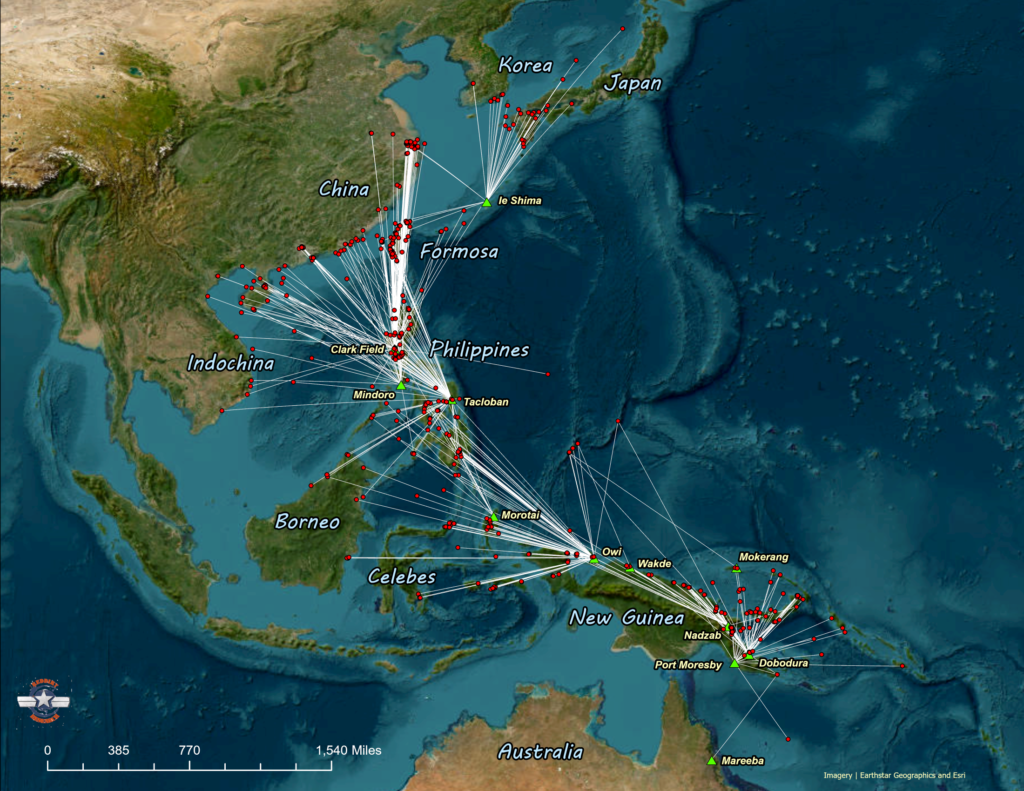The 43rd Bombardment Group (Heavy) was activated in January 1941 and left for the Southwest Pacific Area in February 1942. They arrived in Australia in late March and flew their first combat missions that August.

Flying the Boeing B-17 Flying Fortress, the group operated from Mareeba (and Torrens Creek), Queensland before moving to Port Moresby, New Guinea. During the summer of 1943, they transitioned to the Consolidated B-24 Liberator and flew them for the rest of the war.
Because of the Liberator’s extended range and heavy bomb load, the 43rd often operated well out beyond the front lines and bombed enemy airfields and installations. Their 63rd Bomb Squadron operated almost as a separate unit, flying nighttime armed reconnaissance missions searching for convoys and targeting land-based targets when shipping could not be found. These night-flying B-24s were equipped with radar systems that allowed them to find targets on moonless or cloudy nights.
The unit histories recorded more than 1,200 separate missions, but several dozen of the entries did not have the location recorded or listed a location that I could not identify. 1,185 missions are depicted on the map above, with many of them being multiple visits to the same location. Targets that were recorded by geographic coordinates were mapped without any attempt to correct for coordinate system. Targets that were identified by only the name of a sea were placed randomly over that body of water.
As with other early participants in the Pacific theatre, record keeping for the early months of the war was lacking but became more refined as their situation improved. Missions flown from Torrens Creek, Queensland listed no target locations, but were apparently flown as armed shipping reconnaissance.
